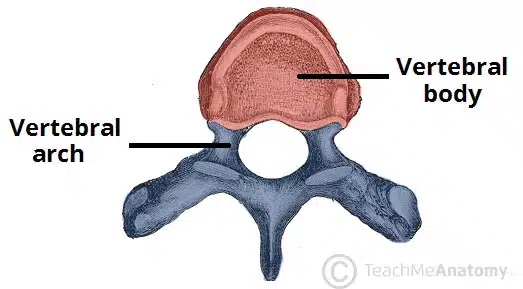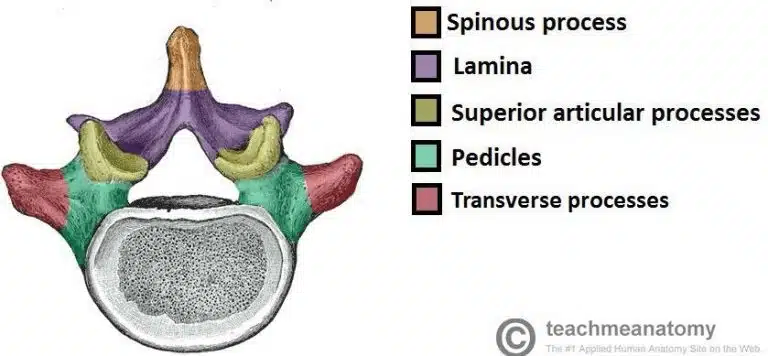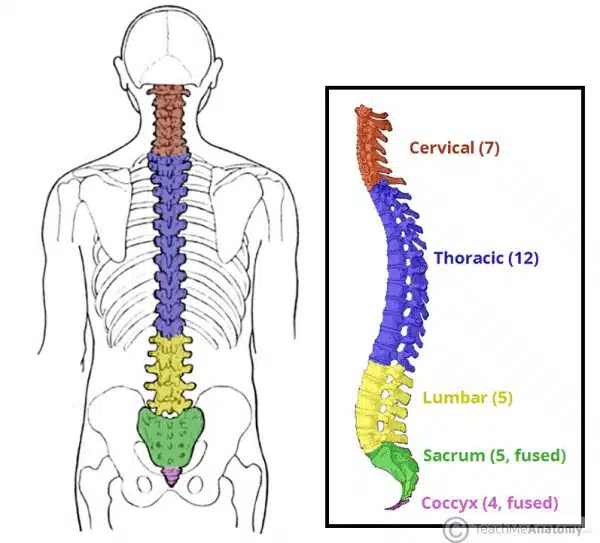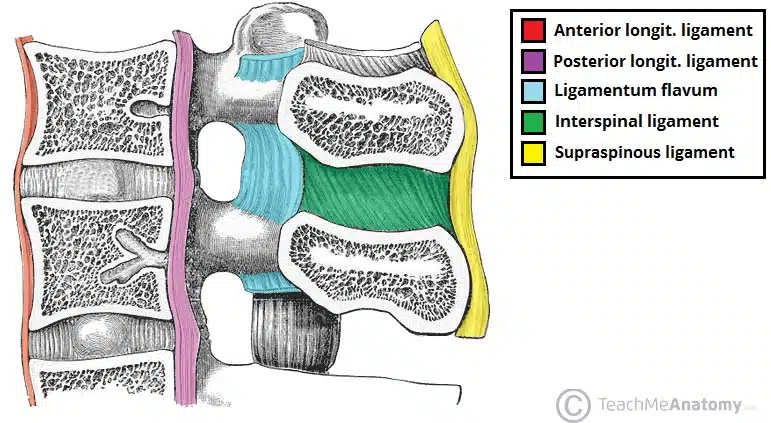척추
척추는 척수를 보호하고, 체중을 지지하는 신체 중심축의 뼈이다.
1. 구조 및 특징
1) Vertebral Body: 앞쪽에 위치하며 체중을 지탱하는 부위. 상하 연골(hyaline cartilage)로 덮여 있고 intervertebral disc로 분리됨.
2) Vertebral Arch: 뒤쪽에 위치하며 vertebral foramen을 형성 → 척추관(vertebral canal)을 이루어 척수를 감쌈
Vertebral Arch는 다시 다음과 같은 요소로 구분할 수 있다.
(1) Spinous Process
(2) Transverse Process
(3) Pedicle
(4) Lamina
(5) Articular Process
2. 위치 별 구분
1) Cervical Vertebrae (C1-C7)
(1) Bifid spinous process 존재 (C1, C7 제외 - C1은 돌기가 없고, C7은 bifid가 아님)
(2) Transverse Foramina 존재 → vertebral a.가 통과
(3) Vertebral Foramen은 삼각형
2) Thoracic Vertebrae (T1-T12)
(1) Costal facet(T1, T10~12) 및 demifacet(T2~9) 통해 ribs와 관절 형성
(2) Spinous process가 아래쪽으로 길게 뻗음
(3) 원형 vertebral foramen
3) Lumbar Vertebrae (L1-L5)
(1) 가장 큰 크기와 kidney-shaped vertebral body
(2) 특징 구조 없음 (foramina나 facet 등)
(3) Epidural, Lumbar Puncture 가능 지점: 주로 L3-4 또는 L4-5 사이
4) Sacrum (S1-S5, fused)
: 역삼각형 모양, sacroiliac joint 형성
5) Coccyx (3-5, fused)
: 작고 퇴화된 구조, vertebral canal 없음
3. 관절 및 인대
1) 관절 종류
(1) Cartilaginous joint (body 간의 관절, 디스크 포함)
(2) Facet joint (articular process 간의 관절)
2) 주요 인대
(1) Anterior Longitudinal Ligament: 과신전 방지
(2) Posterior Longitudinal Ligament: 과굴곡 방지
(3) Ligamentum Flavum: lamina 사이
(4) Interspinous Ligament / Supraspinous Ligament: spinous process 연결
(5) Intertransverse Ligament: transverse process 연결
[해부학 참고자료]
Gray’s anatomy – The anatomical basis of clinical practice, 42th edition
두경부
구강과 침샘
등과 척수
척수 구조



